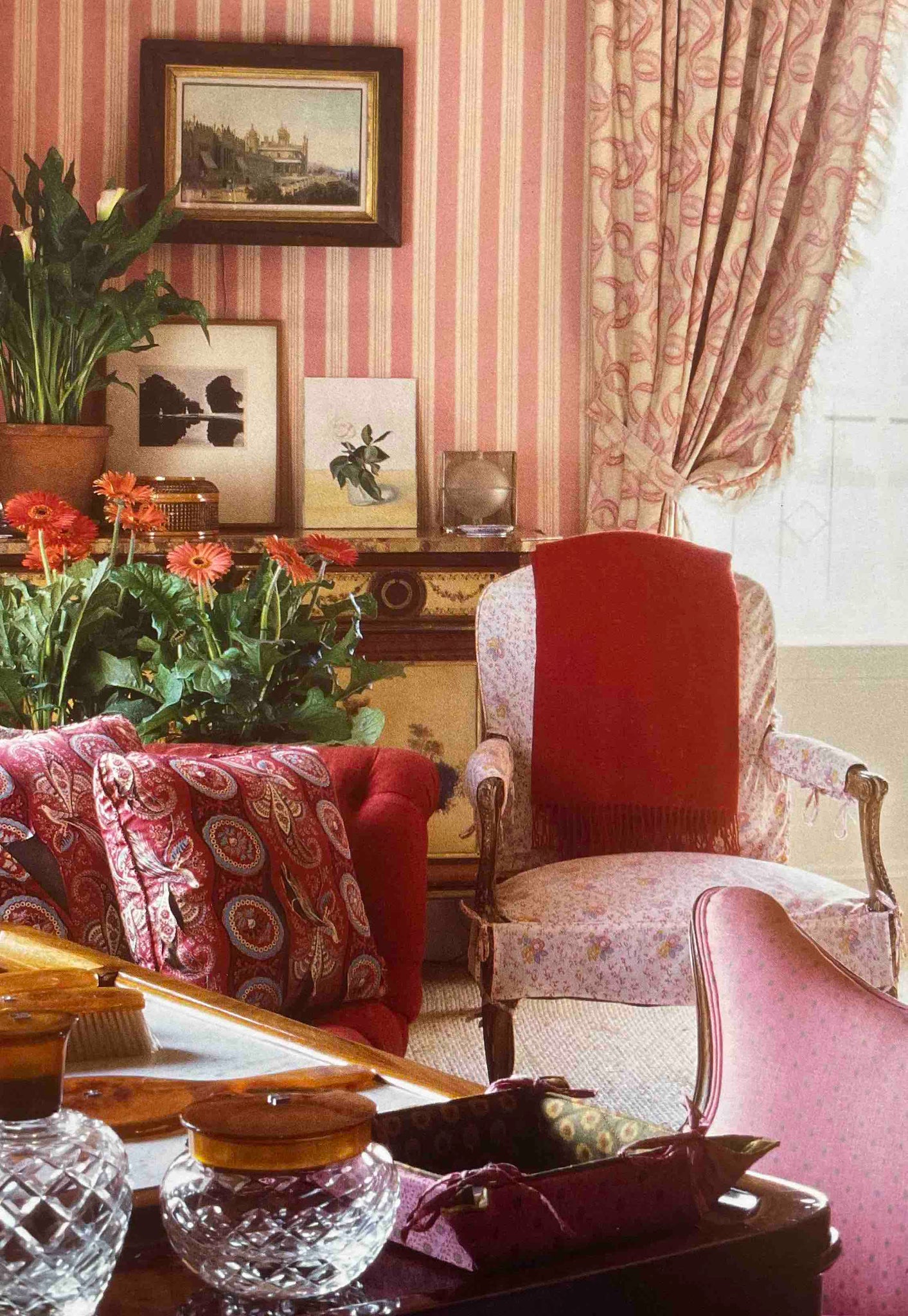THE LAST SWAN: THE LIFE AND LEGACY OF MARELLA AGNELLI
Known for her intellectual curiosity, impeccable taste and influential collaborations with leading designers, Marella Agnelli was one of Italy's most illustrious tastemakers. Her niece, Fabrizia Caracciolo, shares insights into the life and legacy of her aunt, along with images from The Last Swan.
BY FABRIZIA CARACCIOLO | 22 DECEMBER 2023

Marella Agnelli, or 'Donna Marella' as everyone used to call her, was born in Florence, in 1927, to a Neapolitan aristocratic family - the second child of Prince Filippo Caracciolo di Castagneto, a diplomat, and Margaret Clarke, an American heiress.
Together with her two brothers, Carlo and Nicola, Marella grew up in a cultivated, yet quite unconventional, environment, and was exposed to her parents' social circles and refined interests - art, culture, artisanship and interior decor - from a young age. The decoration she viewed and the gardens she played in shaped her early years, and would go on to play a crucial role in her life.
Her testament book, The Last Swan (a nickname given by Truman Capote), begins with a meticulous description of the interiors and gardens of her childhood home in Florence, I Cancelli. Written in partnership with her niece, Marella Caracciolo Chia, The Last Swan is part memoir and part reconstruction of Agnelli's life through her homes and gardens. Notably, what she recalls most from her childhood - apart from her unconditional love for dogs - are decorative elements of furniture that later became recurrent in her houses, such as wicker or Viennese Secession pieces.

Marella's bedroom at her home in Park Avenue, designed by Renzo Mongiardino and Peter Marino © The Last Swan
Her curiosity, innate sense of style, and keen eye for art and design led her to study art at the Julian School in Paris before traveling to New York where she worked as an apprentice photographer, editor and occasional model for Vogue and Harper’s Bazaar. Although her talents were considerable, it was her marriage to Giovanni 'Gianni' Agnelli in 1953 that propelled the glamorous pair into the public consciousness. Gianni was the head of Italian automobile company, Fiat, and then the wealthiest man in Italy. Together, Marella and Gianni - who went on to have two children, Edoardo and Margherita -became one of the most cosmopolitan and influential couples in Europe, known for their inimitable Italian style and sophistication.
Marella herself was known for her impeccable taste. Her elegance and grace made her an iconic figure of the European 'fast set' during the booming post-war era, while her unblemished sense of personal style made her one of the greatest tastemakers, frequently featured on the best-dressed lists of leading magazines.

When creating and curating her beloved homes, Marella worked with some of the world's best architects, decorators, and landscape designers. Not just collaborators, most of them became her close friends. The projects that marked her life also became a key reference point for the world of interior decoration: from the restoration of the scenic Villar Perosa - the Agnelli family's 18th-century villa in Piemonte, designed in the ‘60s and ‘70s by Stéphane Boudin and Russell Page - to Marella’s most recent project, Aïn Kassimou in Marrakech (pictured below), designed with Alberto Pinto, Gae Aulenti, and Madison Cox.
 Shop The Last Swan now in our Bookshop
Shop The Last Swan now in our Bookshop

The living room at Aïn Kassimou, Marrakech, featuring Bonacina chairs designed by Gae Aulenti and chromolithographs by Carlo Bossoli © Eric Boman, The Last Swan
There were many intermezzos too: Renzo Mongiardino, Peter Marino. In the '70s, Marella created a textile line for Abraham-Zumsteg that would become a trademark in the field. The archive now belongs to Peter Marino Architect PLLC.
Marella's houses all had a fil rouge (common thread) thanks to her ability to orchestrate, mix styles and create an eclectic, unique atmosphere. She had several charming design trademarks - such as the abundant usage of wicker, indoor as outdoor, and her penchant for mixing reds and pinks together - and a great passion for textiles, particularly floral French fabrics like Braquenié and Le Manach. Her real talent, however, lay in her talent for preserving the spirit and soul of the places she inhabited.

As passionate collectors, Gianni and Marella founded an art gallery, the Pinacoteca Agnelli, within a 1920s former Fiat factory in Turin. Transformed into a multi-purpose building in 2002 by Italian architect, Renzo Piano, the gallery features masterpieces by some of the most prominent artists of our times. As a philanthropist, Marella has also supported several notable cultural and artistic initiatives, including the restoration of historic landmarks and the promotion of Italian art and culture: she has supported the Fondo Ambiente Italiano (the National Trust for Italy), the American Academy in Rome, and Palazzo Grassi in Venice.
Marella Agnelli passed away in February 2019, but her legacy as a philanthropist, style icon, and tastemaker lives on. She made a significant impact in the worlds of interior decoration, art and philanthropy, and her contributions continue to inspire others. Her life and legacy bears testament to how beauty and elegance can embellish and improve all aspects of life. Marella's trademark mix of grace and insight makes her the last 'Grande Dame' of the 20th century.

Cabana Magazine N24
Covers by Morris & Co.
This issue will transport you across countries and continents where craft and culture converge. Evocative travel portfolios reveal Japan's elegant restraint, Peru's sacred churches ablaze with color, and striking architecture in a fading Addis Ababa. Inspiring minds from the late Giorgio Armani to Nikolai von Bismarck spark curiosity, while exclusive homes—from the dazzling Burghley House in England and an Anglo-Italian dream in Milan, to a Dionysian retreat in Patmos and a historic Pennsylvania farmhouse—become portals that recall, evoke and transport.






















































